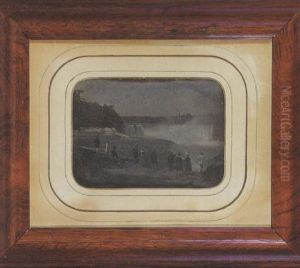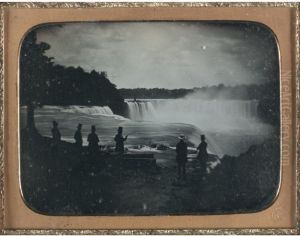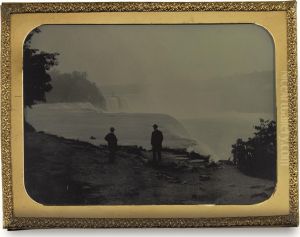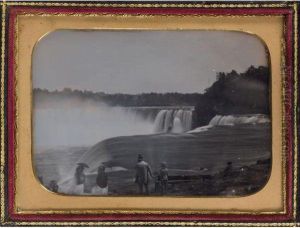Platt D. Babbitt Paintings
Platt D. Babbitt was an American photographer, known primarily for his early use of photography in the context of tourism. Born in the year 1822 in Little Falls, New York, Babbitt became one of the early pioneers of photography, experimenting with the medium at a time when it was still a novel and evolving form of technology.
Babbitt's most famous work was his photography of Niagara Falls, which he began in the early 1850s. At a time when travel was becoming more accessible and popular, Babbitt saw an opportunity to capitalize on the influx of tourists to the area. He set up a studio and viewing platform near the American side of Niagara Falls and began taking daguerreotypes, a type of early photograph that was made on a silver plate. His images captured the grandeur and power of the falls, along with the tourists who came to marvel at them. Babbitt's work is significant because it represents one of the first instances where photographs were used to document and promote a tourist destination.
Throughout his career, Babbitt continued to explore the possibilities of photography. He experimented with different techniques and formats, including stereographs, which were a form of early 3D images that became very popular in the 19th century. His work contributed to the growing interest in American landscape photography and helped to establish photography as a legitimate and valuable art form.
Platt D. Babbitt passed away in 1879. While he is not as widely known as some of his contemporaries, his contributions to the field of photography, particularly in the context of tourism and landscape imagery, have been acknowledged by historians and collectors. His surviving photographs provide a fascinating glimpse into the early days of American tourism and the ways in which photography was used to capture and share the natural wonders of the world.




